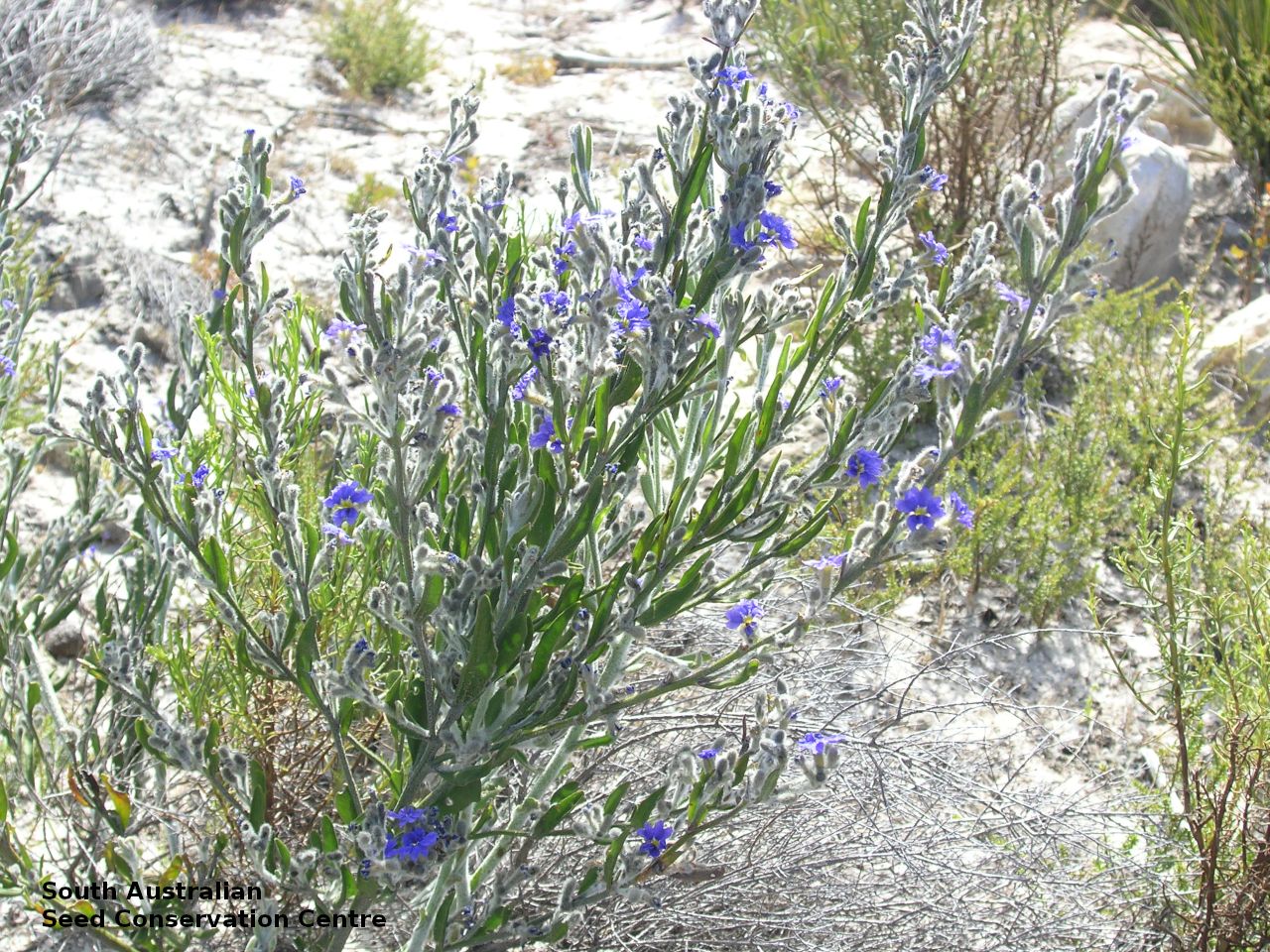
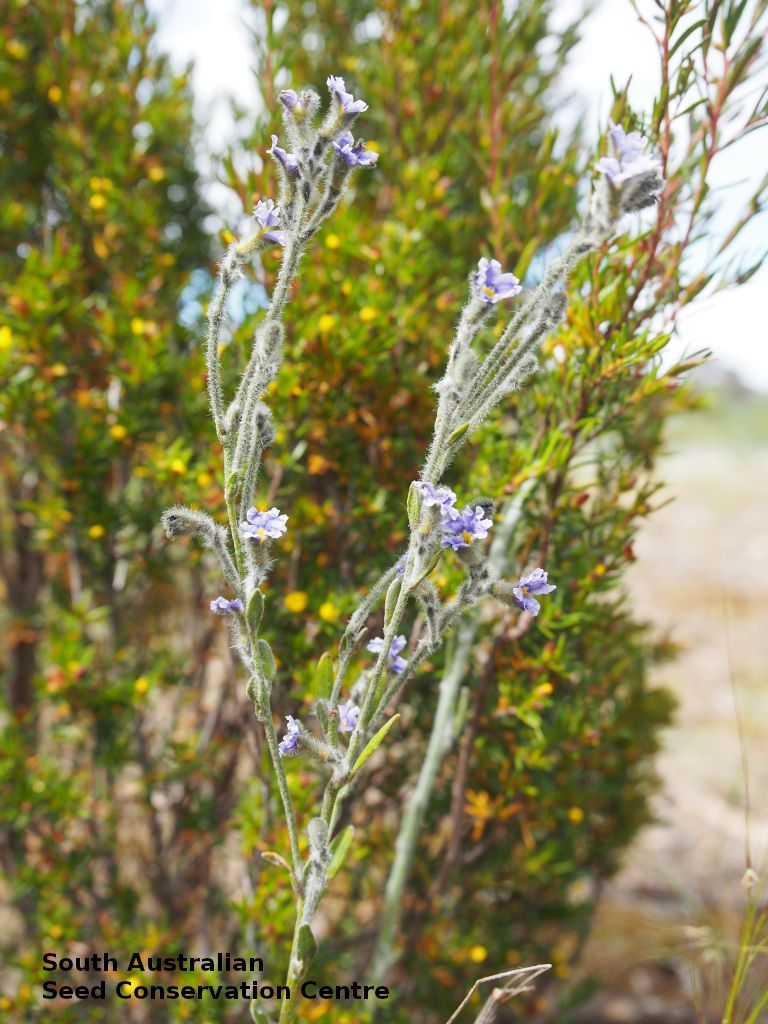

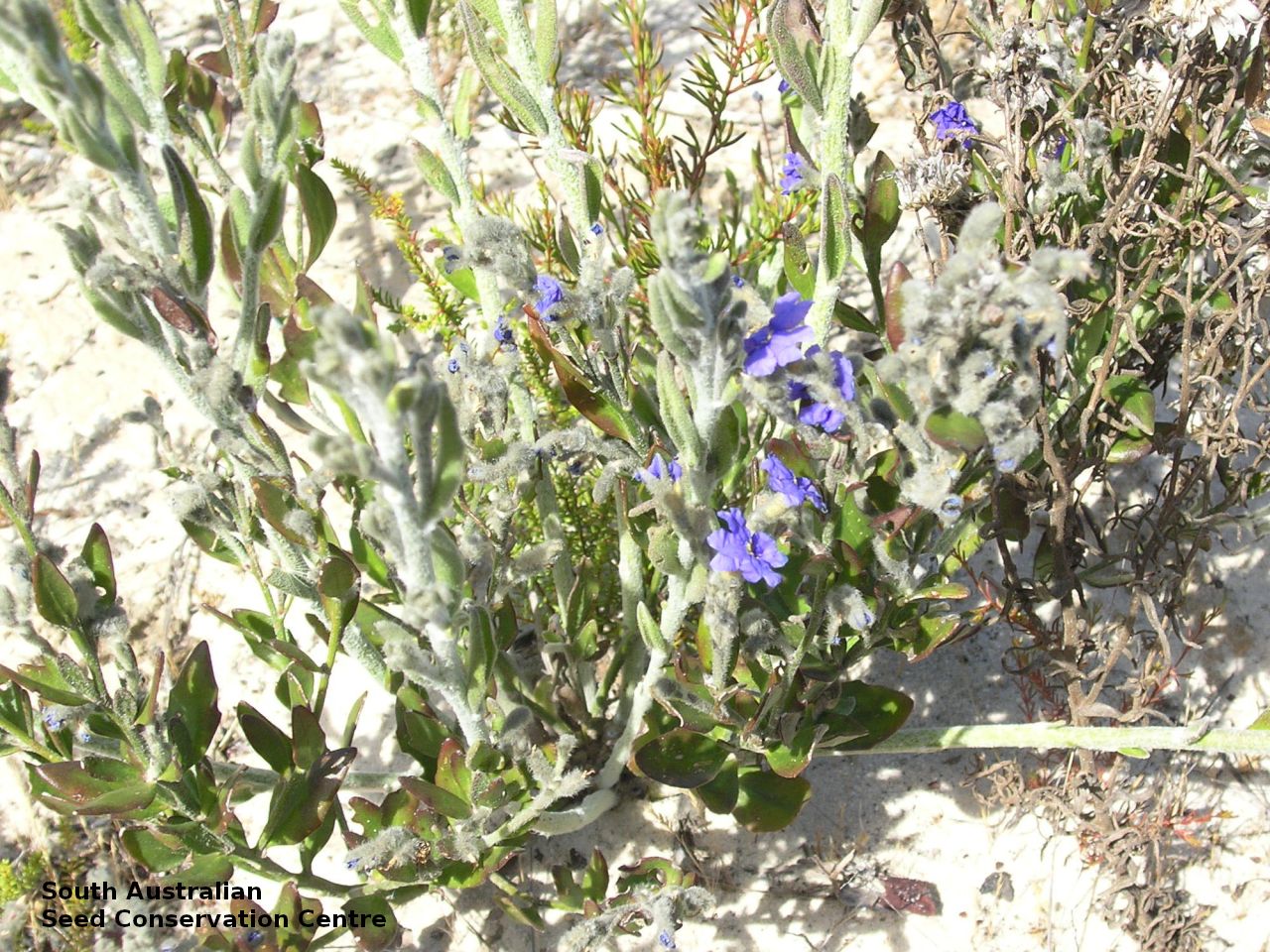
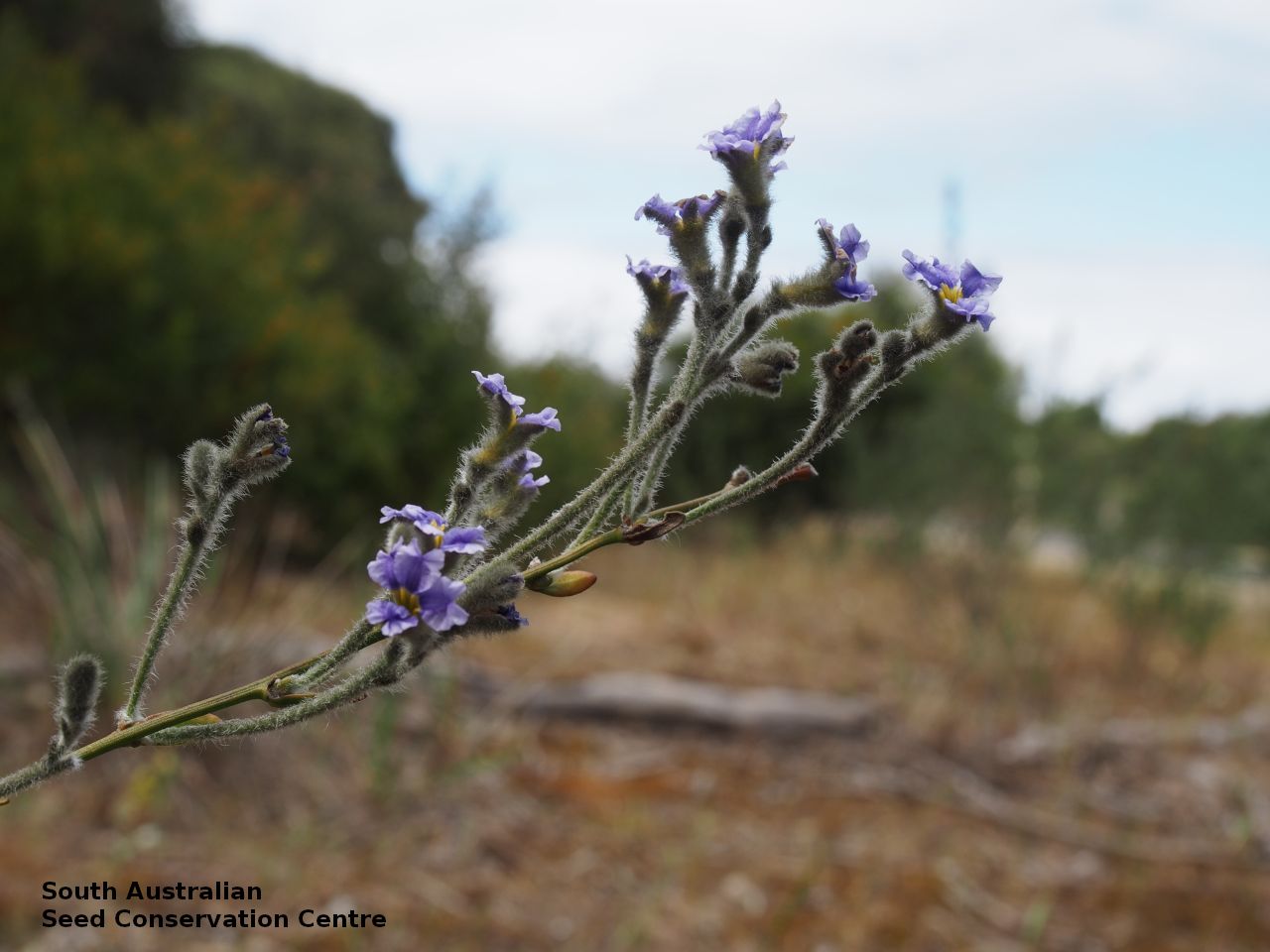
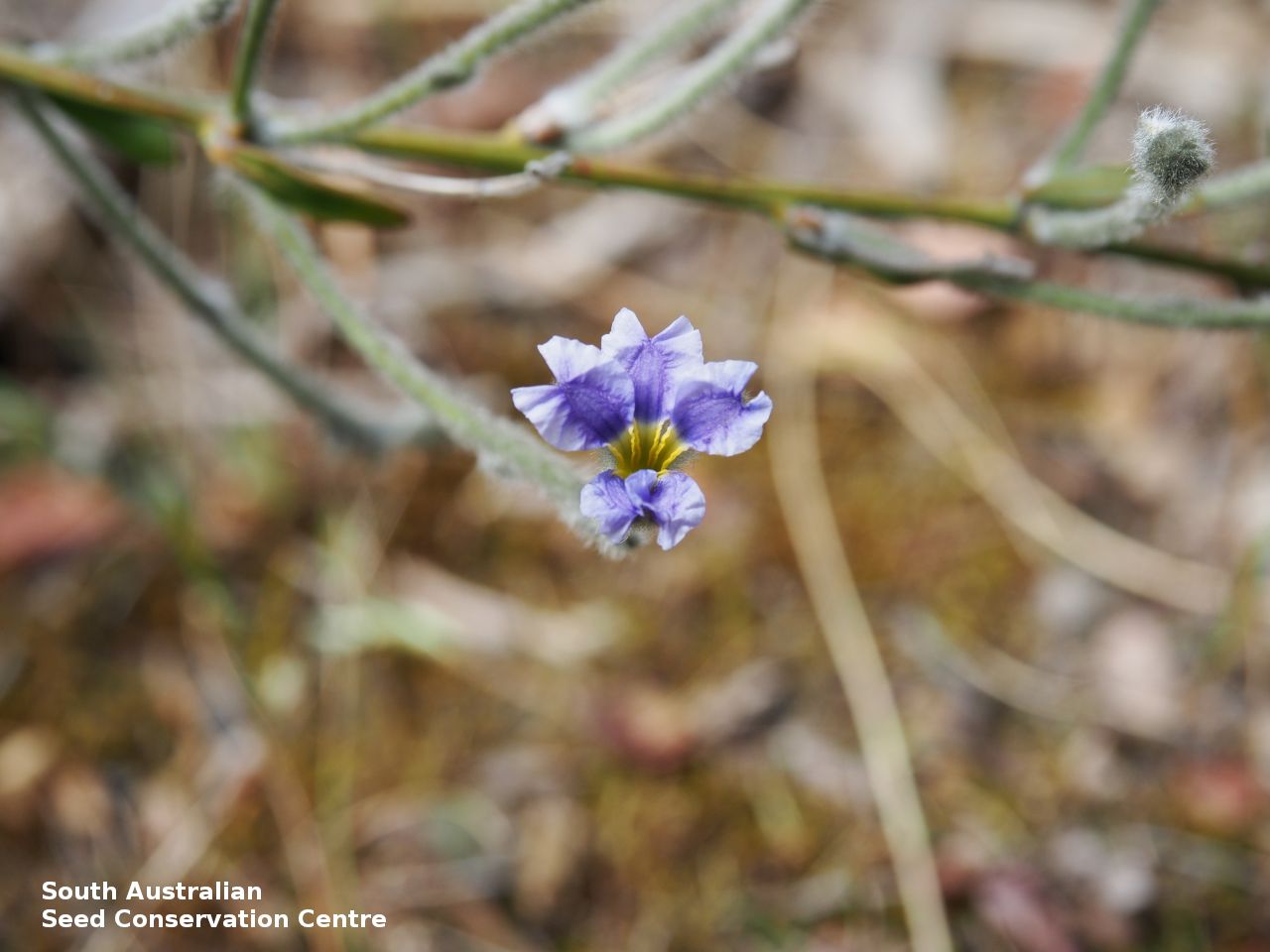

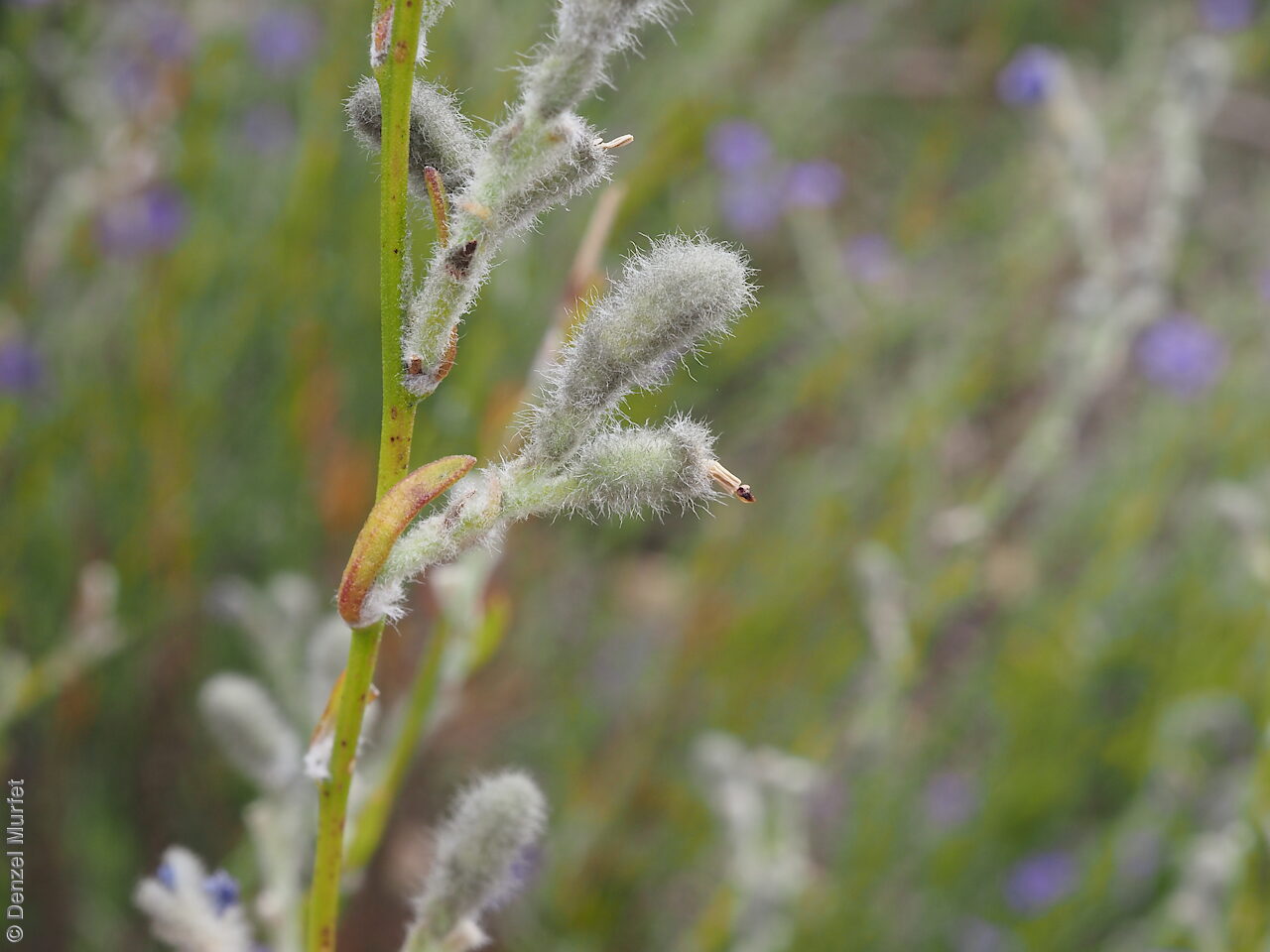
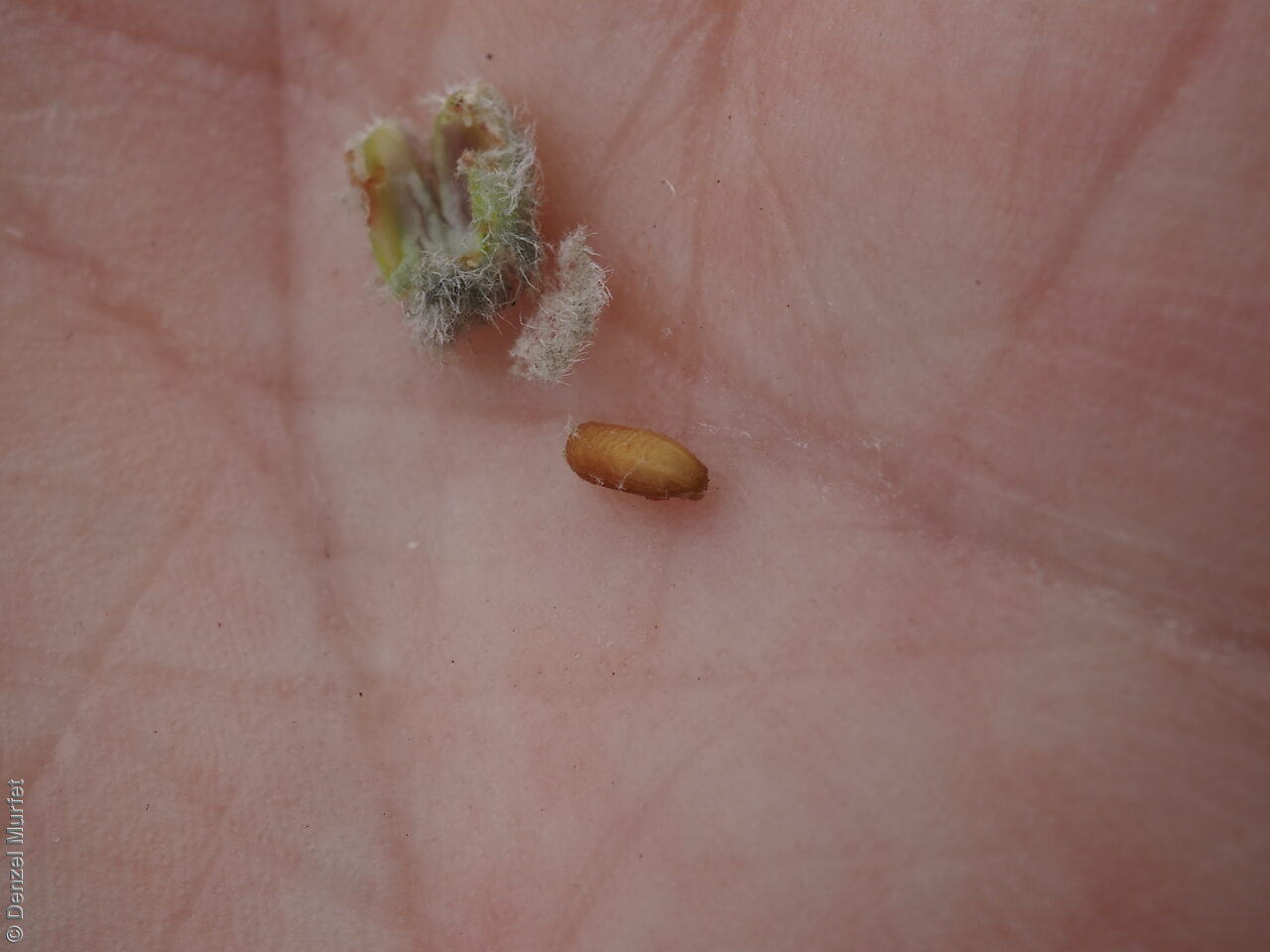
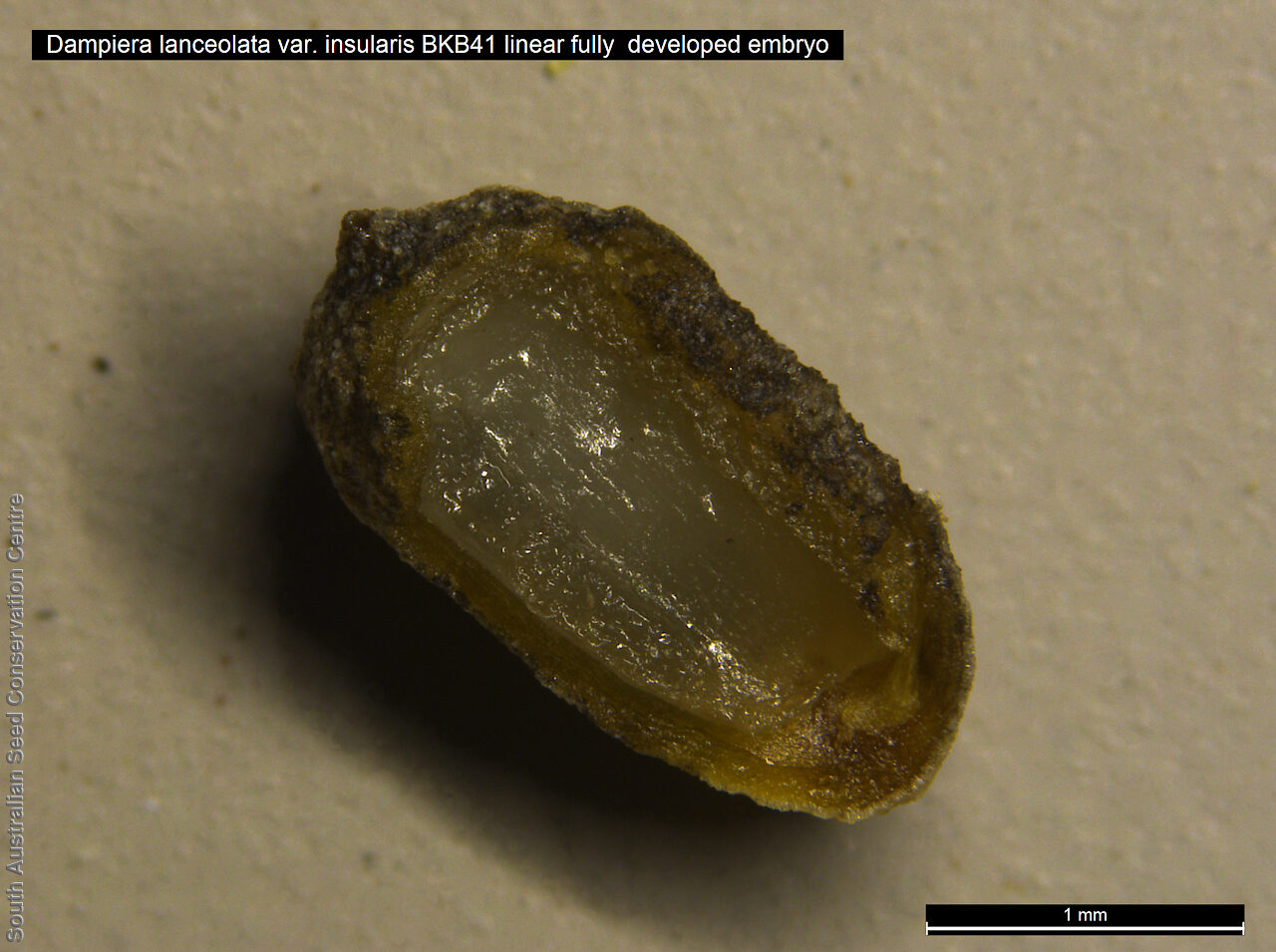


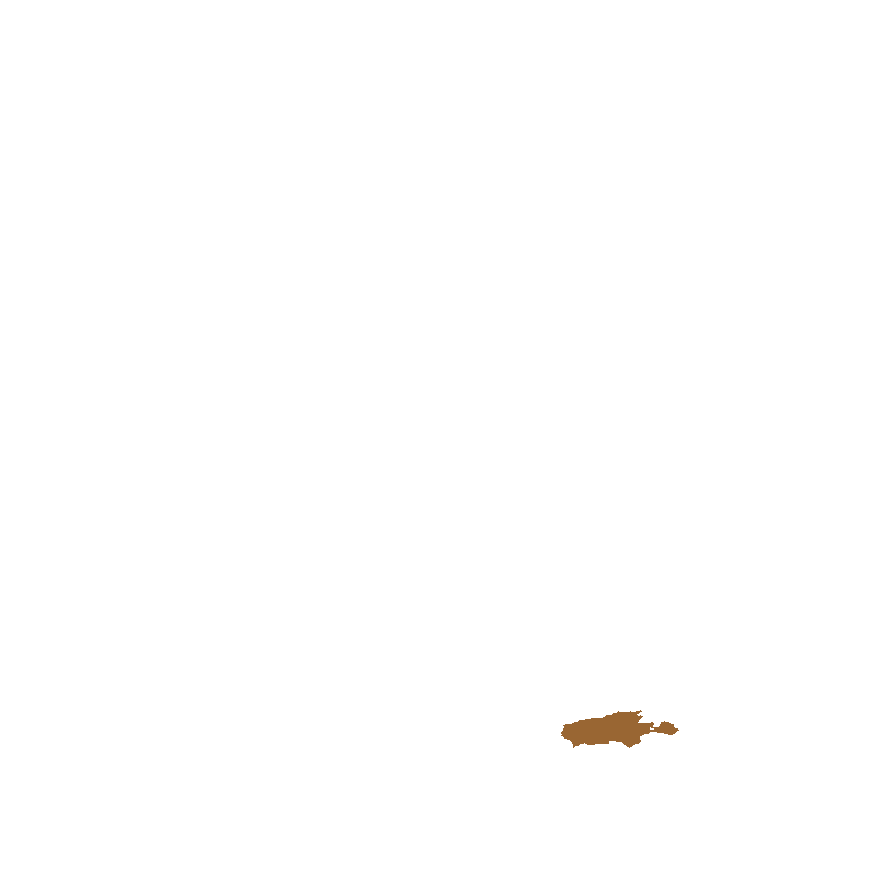
Botanical art
Common names
Kangaroo Island Dampiera
Etymology
Dampiera named after William Dampier (1652-1715), an English buccaneer and explorer, who collected botanical specimens on the north-west coast of Australia in 1699 as commander of H.M.S. Roebuck. Lanceolata from the Latin 'lanceolatus' meaning shaped like a lance-head, referring to the shape of the leaf. Insularis from Latin meaning pertaining to or growing on islands, referring to the species occurring only on Kangaroo Island.
Distribution and status
Endemic to South Australia and found only on Kangaroo Island, growing on sandy soils in sclerophyll forest and scrub. Native. Uncommon in South Australia.
Herbarium region: Kangaroo Island
AVH map: SA distribution map (external link)
Plant description
Erect shrub to 1 m tall with glabrescent stems. Leaves oblong to ovate-elliptic, papillate, clustered or alternating along the stems, to 5 cm long and 26 mm wide, upper surface hairy becoming hairless, lower surface hairy, edges flat or curved down. Flowers purplish blue with a yellow throat, tubular, the tube split to the base, with 5 lobes, solitary or in groups of 2-9 flowers on 1-3 stalks arising at the bases of the leaves. This variety is distinguish from the other two varieties found in South Australia by its glabrescent stems, leaves oblong to ovate-elliptic, papillate and hairs outside corolla not appressed, tomentose with spreading dark-grey dendritic hairs, where as D. lanceolata var. intermedia have tomentose and not papillate stems, leaves oblong to ovate-elliptic, slightly papillate and hairs on outside of corolla loose, silky, pale grey and D. lanceolata var. lanceolata have glabrescent, papillate stems, leaves linear to oblong-elliptic, usually not papillate and hairs outside corolla tomentose with long dendritic or plumose grey hairs. Flowering between August and January. Fruits grey-tomentose cylindric to 5 mm long and 3 mm wide. Seeds black woody, oblong, with deep wrinkled surface. Seed embryo type is spatulate.
Seed collection and propagation
Collect seeds between October and February. Collect maturing fruits, those that are fat and contain hard dark seeds inside. Collecting good mature fruits will be time consuming as few fruits maybe produced. Place the fruit in a tray and leave to dry for two weeks. Then rub the fruits gently with a rubber bung to dislodge the seeds. Use a sieve to separate any unwanted material. Store the seeds with a desiccant such as dried silica beads or dry rice, in an air tight container in a cool and dry place. This species tend to produce very few viable seeds.
| Location | No. of seeds (weight grams) | Number of plants | Date collected | Collection number Collection location | Date stored | % Viability | Storage temperature |
|---|---|---|---|---|---|---|---|
| BGA | 450 (1.235 g) | 16-Jan-2022 | D.A.Young Kangaroo Island | 7-Jul-2022 | 100% | -18°C | |
| BGA | 470 (1.206 g) | 4-Mar-2022 | MJH81 Kangaroo Island | 7-Jul-2022 | 94% | -18°C | |
| BGA | 1,090 (2.948 g) | 50+ | 3-Jan-2022 | BKB41 Kangaroo Island | 10-Aug-2022 | 100% | -18°C |
Number of plants: This is the number of plants from which the seeds were collected.
Collection location: The Herbarium of South Australia's region name.
% Viability: Percentage of filled healthy seeds determined by a cut test or x-ray.